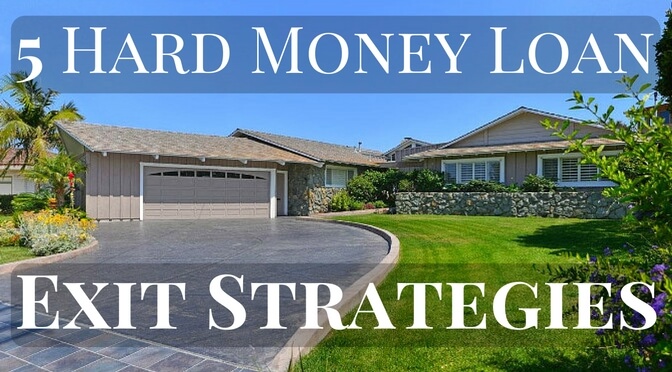
5 Hard Money Loan Exit Strategies
Hard money loans for real estate investors and property owners are an important financing tool that allow for fast and flexible funding. Hard money is convenient, but it is for short term use only, generally 1-5 years. When applying for a hard money loan, the hard money lender is going to need to know the borrower’s exit strategy, since this determines how the lender will be paid back. Real estate investors should always have multiple exit strategies as investment plans and real estate markets can change unexpectedly.
Below are 5 exit strategies for hard money loans.
1. Sell the property
This is a simple and obvious option, especially when the borrower is obtaining hard money loans for flipping houses. The real estate investor sells the property and the proceeds go towards paying off the balance of the hard money loan. The remaining funds go towards recouping the real estate investor’s costs for the fix and flip project, and whatever is left over is profit.
2. Refinance the hard money loan to a conventional loan
Refinancing from a hard money loan into a conventional loan takes the financing from short term to long term. This will also reduce financing costs as conventional loans will always have lower rates than hard money loans.
Refinancing into conventional loans is appropriate in situations where the property is owner occupied. Borrowers go with a hard money loan initially because they may have issues on their record that prevented banks from lending to them. These issues may include recent foreclosures, bankruptcies, short sales, loan modifications or bad credit. After a few years and some work to repair problems, some of these issues can be taken off a borrower’s record and they will be eligible for a conventional loan again.
3. Refinance into a subprime loan
If the hard money loan borrower still hasn’t done enough to qualify for a conventional loan, they may be able to refinance into a subprime loan. Subprime loans have lower requirements than a conventional loan but they have higher interest rates and less favorable terms. They will however offer longer loan terms and lower interest rates than hard money loans.
4. Refinance into a new hard money loan
If refinancing into a subprime loan isn’t an option, the borrower may be able to refinance into a new hard money loan. If the borrower has made all of their payments on time, it may be possible to extend the term of the existing hard money loan. The hard money lender may charge a fee for extending the loan past the agreed upon term. Another option would be to refinance with a different hard money lender with lower rates or better terms. It is important to ensure the monthly payments and the balloon payment due at the end of the agreed upon term are paid in a timely manner, as failure to make these payments will eventually result in foreclosure.
5. Sell other investments to pay off hard money loan
If the borrower doesn’t want to sell the property with the hard money loan and isn’t able to refinance into another type of loan, the borrower can look to raise funds in other ways to pay off the hard money. Selling other properties or liquidating investments may be the best option based on the real estate investor’s current and future investment objectives.







